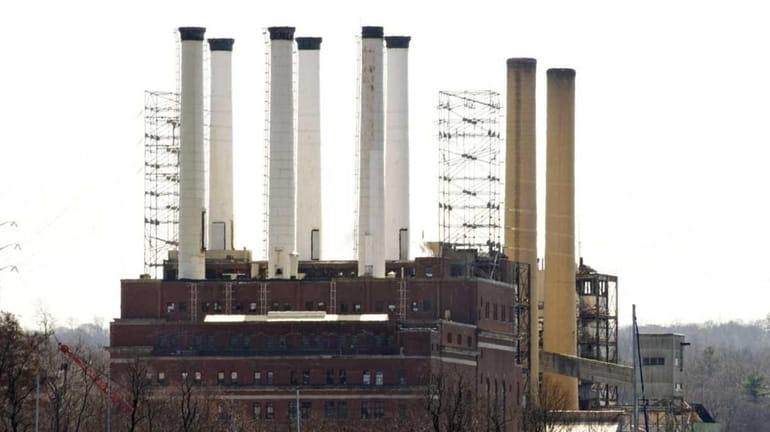Barnaby: Give new life to the Glenwood Landing plant

The Glenwood Landing power plant in 2011. Credit: T.C. McCarthy
National Grid is poised to demolish the Glenwood Landing power plant, the almost 100-year-old architecturally unique Long Island landmark, in part to reduce its tax assessment. The company plans to remediate the site, pave it over, fence it off, and leave Glenwood Landing's prime waterfront inaccessible, also reducing needed tax revenues. The utility paid $22.6 million in taxes in the 2012-13 year.
National Grid will retain turbines, oil tanks, substations, high-voltage overhead cables and transmission towers -- alongside the New York Power Authority's turbines and Global Partners' oil terminal and tanks. That would make the area unsuitable for residential and most commercial uses. Given that, wouldn't it make sense to explore ways to repurpose the plant's building and site to make it neighborhood-friendly and waterfront-accessible?
We, the signers of a petition to save the historic building, call on National Grid to hold off demolition until it can fully consider how the building might be most advantageously repurposed as a commercial, taxpaying enterprise as quickly as possible, and its prime waterfront revitalized and made accessible for our Glenwood Landing, North Shore and Hempstead Harbor communities.
Also, because the land is privately held by National Grid, many residents fear that without the tax revenue generated by the site, their school taxes will skyrocket. But we can help avoid that if we repurpose the power station. Here's why:
Because of their locations near water, solid construction and unusual size, decommissioned power plants and industrial buildings are ideal for repurposing for the public good and corporate profit. For example, Austin's Seaholm Power Plant is now part of a downtown revitalization, Baltimore's Pratt Street Plant is now a dining and entertainment destination, and Chicago's Homan Square Power House now includes a charter school. Closer to home, there are plans for the Yonkers Glenwood power plant to become a convention center and hotel.
The Glenwood Landing plant's condition is superior to the crumbling Yonkers plant. Huge steel beams brace its massive walls throughout; the brickwork of the classical revival building has been replaced and repointed. The Long Island Regional Economic Development Council last summer discussed state economic development funding available for community and waterfront revitalization projects. Repurposing the Glenwood Landing plant would qualify for such funding.
The Glenwood Landing plant meets the criteria for listing on the National Register of Historic Places, according to the state Office of Parks, Recreation and Historic Preservation. It is "an important work of architectural and engineering design on Long Island . . . Only a small number of these buildings survive," the office has said.
Preserving older buildings has become part of urban renewal projects and smart sustainability. Repurposing structures is part of building green -- considered more sustainable than razing or rebuilding. Alexandra Wolfe, of the Society for the Preservation of Long Island Antiquities, calls repurposing Glenwood Landing a great idea.
Surely, our North Shore communities' quality of life, economic well-being and future, and the environmentally responsible revitalization of Hempstead Harbor waterfront, must not be subordinated to National Grid's self-interest. Instead they demand the imagination, engagement and leadership of local, state and federal officials, as well as corporate executives and civic leaders.
Karin Barnaby, a copy editor who has lived in Sea Cliff for 45 years, was a teacher in South Huntington and at Hofstra University. She is circulating a petition at change.org to save the Glenwood Landing Power Plant from demolition.

